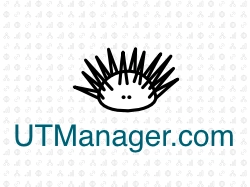In the middle of the funnel, audiences have moved beyond basic awareness. They’re now comparing products, researching alternatives, and looking for evidence to support their decision-making. Marketing efforts at this stage focus on education, credibility, and relationship-building rather than aggressive selling.
The key is to guide and inform rather than push for an immediate purchase. Effective MOFU marketing delivers content and experiences that help prospects understand how your product or service fits their needs, differentiates from competitors, and provides real value.
Common middle-of-funnel tactics include:
- Email Nurture Campaigns: Personalized email sequences that deliver relevant content, build trust, and move leads toward sales readiness.
- Webinars and Live Demos: Interactive sessions that showcase expertise, answer questions, and demonstrate real use cases.
- Case Studies and Testimonials: Real-world examples that validate claims and provide social proof.
- In-depth Guides and Comparison Content: Resources that help prospects evaluate their options more clearly.
- Retargeting Campaigns: Ads that keep your brand top of mind as prospects continue their research journey.
- Lead Scoring and Segmentation: Identifying high-potential leads for more targeted follow-up.
- Product-Focused Content: Explainers, FAQs, and tutorials that demonstrate value and fit without heavy sales pressure.
Example: A marketing automation platform nurtures leads who downloaded a buyer’s guide (top of funnel) with a series of MOFU emails. These include a webinar invite on “How to Automate Your Lead Nurturing,” customer success stories, and a feature comparison sheet. This targeted content helps prospects understand how the platform solves their specific challenges, positioning the company as a trusted solution before they ever speak to sales.
Best practices for middle-of-funnel marketing:
- Focus on solving problems and answering questions, not just pitching features.
- Use personalization to deliver the right content at the right time based on behavior and lead attributes.
- Highlight differentiation and value propositions clearly to stand out from competitors.
- Provide multiple engagement options (e.g., webinars, demos, downloads) to match different research preferences.
- Collaborate closely with sales teams to align messaging, timing, and lead qualification criteria.
- Track key metrics like engagement rate, webinar attendance, content downloads, and lead-to-opportunity conversion rates.
Middle-of-funnel efforts play a crucial role in turning awareness into intent. By offering relevant, trust-building content and experiences, marketers can deepen relationships with prospects and move them closer to making an informed buying decision.
